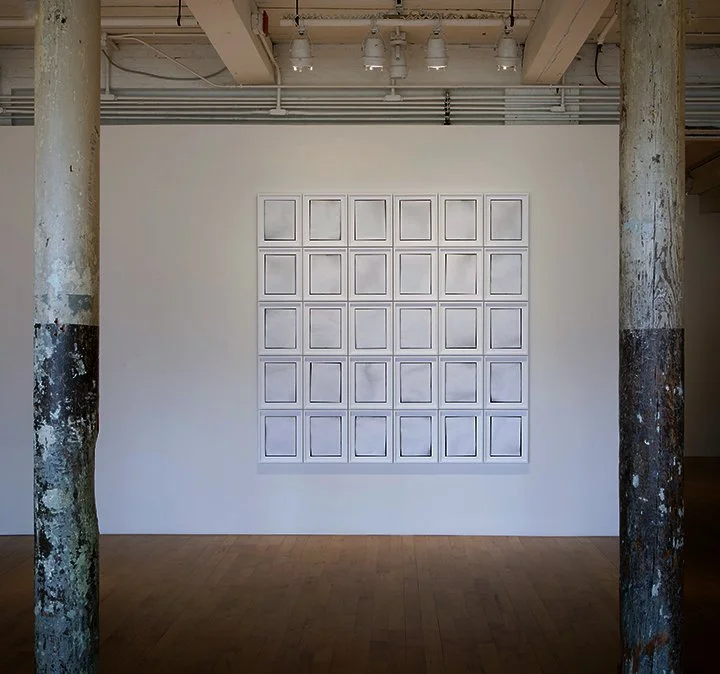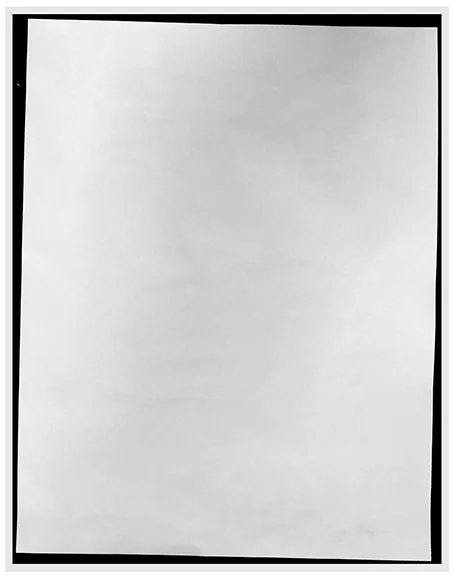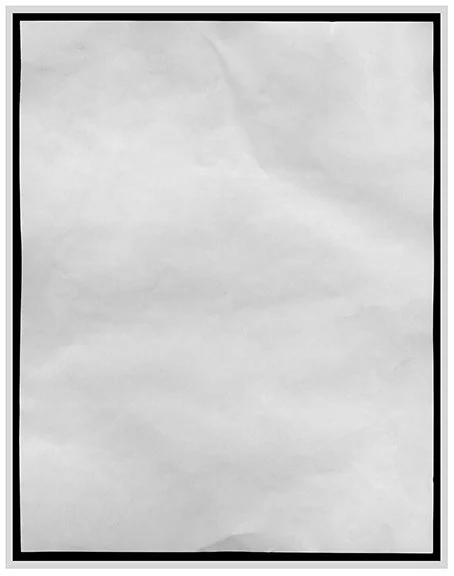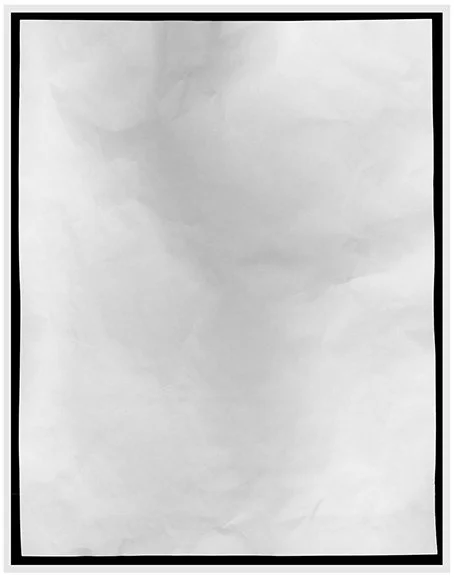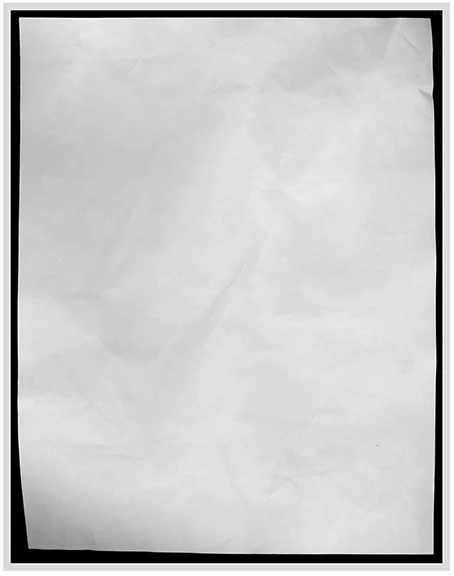Edge Of The Cloud, 2011
Edge Of The Cloud, #12, 11 x 8.5”
Edge of the Cloud began with wanting to begin again, to carefully assess my reasons for making images and to reflect on past compromised decisions. The series developed when the idea of cliché (a blank piece of paper) collided with the idea of metaphor (technology's cloud). It was the ground for laying down thoughts. I started by scanning a single sheet of paper. Then I scanned it again. And again, thirty times.
The first image has minimal information, as the paper was new and barely touched. The last has the most detail—dimples, creases, scuffs—a result of the paper being handled over time. Seeing all thirty scans together, the image of paper ceased to be recognized. Instead, what appeared was an impression of a pale-gray cloud. This reinterpretation brought up the question of where my images live. I found them in a current-day abstraction.
A distant network holds information. It is an emotionless system that doesn't require me to understand or care about its exact location. I imagine my pictures to be somewhere in the ether, floating around for me to grab them when needed. Once retrieved our relationship becomes intimate again. It is by giving over my work to the intangibility of 'the cloud' that I approach a 21st-century abstraction.
Alfred Stieglitz redefined what was seen, or not seen, in a picture of a cloud. He wanted to let go of representation and disoriented the viewer by creating a modern reading of a photograph. Through Equivalents (originally titled Songs of the Sky), he stated that clouds are there for everyone. And by questioning a recognizable object he gave us the tools to understand the flatness of an image's surface. Today, I look at his pictures and see what is missing—a tree, a figure. I understand what is left behind—a cloud.
Although Edge of the Cloud didn't begin with the idea of representing or misrepresenting a physical cloud, it allowed me the experience of 'stepping back,' taking time to reflect and re-examine what I choose to photograph. I still have the original sheet of paper that I scanned. It's proof that something tangible exists. And as I cling to the object, as I feel its potential loss, I hesitate and straddle an imagined threshold—an edge. At the same time I accept a new metaphor of place.
A blank piece of paper led me to a different representation of a cloud. The Internet redirected me to an understanding of it being "there for everyone."
9.28.11
MASS MOCA, 2015
Edge Of The Cloud #11, 2011, 11 x 8.5”
Edge Of The Cloud #14, 2011, 11 x 8.5”
Edge Of The Cloud #17, 2011, 11 x 8.5”
Edge Of The Cloud #21, 2011, 11 x 8.5”
Edge Of The Cloud #24, 2011, 11 x 8.5”


